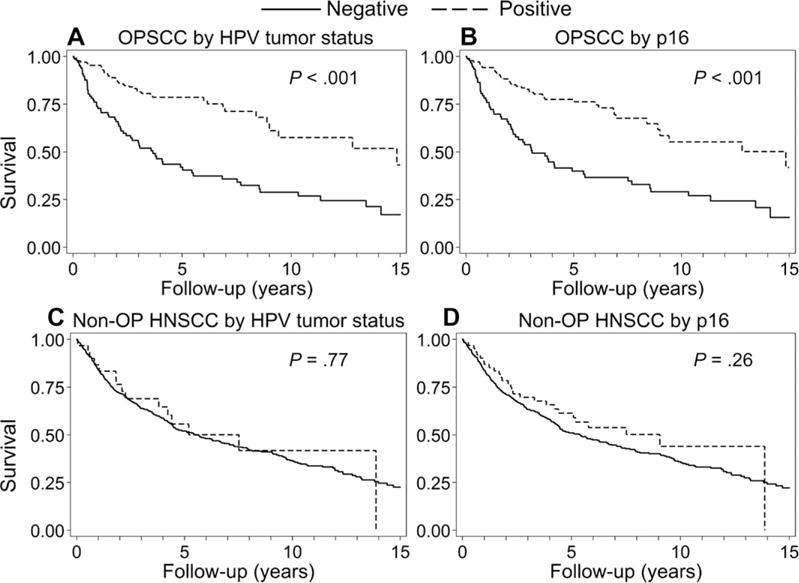Figure 1.

Overall survival by the tumor HPV status and p16 immunohistochemistry for OPSCC patients (n = 239) and non-OP HNSCC patients (n = 621). (A) Overall survival for HPV-positive patients with OPSCC (n = 134) and HPV-negative patients with OPSCC (n = 105) was 78.6% and 42.0%, respectively, at 5 years and 57.6% and 28.8%, respectively, at 10 years. (B) Overall survival for patients with p16-positive OPSCC (n = 144) and patients with p16-negative OPSCC (n = 95) was 77.5% and 39.9%, respectively, at 5 years and 55.2% and 29.1%, respectively, at 10 years. (C) Overall survival for HPV-positive patients with non-OP HNSCC (n = 30) and HPV-negative patients with non-OP HNSCC (n = 590) was 55.7% and 52.0%, respectively, at 5 years and 41.8% and 36.4%, respectively, at 10 years. (D) Overall survival for patients with p16-positive non-OP HNSCC (n = 62) and patients with p16-negative non-OP HNSCC (n = 559) was 61.4% and 51.0%, respectively, at 5 years and 44.0% and 35.8%, respectively, at 10 years. HNSCC indicates head and neck squamous cell cancer; HPV, human papillomavirus; non-OP, nonoropharyngeal; OPSCC, oropharyngeal squamous cell cancer.
